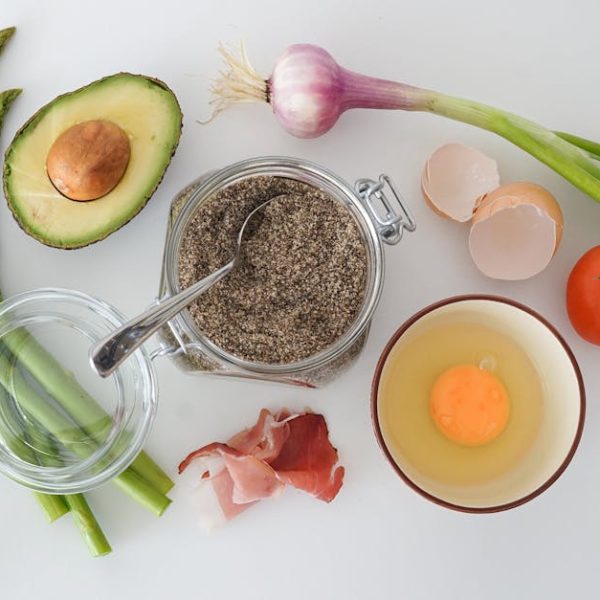Cabbage – an unassuming vegetable that’s known for its hardiness and crisp texture but its family consists of diverse members each with unique attributes. From the commonly used green cabbage to the crinkly Savoy and the leafy Chinese types, each variety comes with distinct flavors, textures, and uses.
Understanding the Different Varieties of Cabbage
In the cabbage kingdom, variety reigns. Here are some varieties you may encounter:
- Green Cabbage: The common type found in most supermarkets. It’s round, solid, has smooth and lightly glossy leaves. Ideal for salads, stews, and making sauerkraut.
- Red Cabbage: Similar to green, but with a vibrant purple color. It carries a slightly peppery flavor and is perfect for adding color to salads and pickles.
- Savoy Cabbage: This type has dark green, ruffled, and crinkled leaves. Its mild flavor is suited for stir-fries and wraps.
- Napa Cabbage: It’s more elongated, lightly crinkled with a softer texture and sweeter taste. Good for Asian dishes like Kimchi.
- Chinese or Bok Choy: Features dark green leaves with white stalks. Bok Choy is great for soups and steamed dishes.
Preservation comes next – always store the cabbage in a cool, dry place. If it’s chopped, keep in an airtight container in the fridge for up to two days.
Nutritional Value and Health Benefits of Different Cabbage Types
Cabbage isn’t just a filler – it adds nutritional value to your meals. Here’s what each type brings to your plate:
- Green Cabbage: High in Vitamin C and K, also contains some folate and fiber.
- Red Cabbage: Packed with Vitamin A, C, K, and Anthocyanins (antioxidants giving it the vibrant color).
- Savoy Cabbage: Rich in Vitamin C, K, B6, and fiber.
- Napa Cabbage: Contains Vitamin C, K, and folate. Also has a higher water content which keeps you well hydrated.
- Bok Choy: Excellent source of Vitamins A, C, K, and calcium.
For the best nutritional uptake, consume cabbage raw or slightly sautéed. Overcooking can reduce the nutrient content.
How to Select and Buy Various Cabbage Types
Choosing the right one for your dish depends on the recipe, but for any type, here’s what you should look for:
- Appearance: Fresh cabbages should have shiny, crisp leaves without any holes or blemishes.
- Touch: Cabbages should feel solid and heavy for their size.
Don’t overlook the buying place. Local farms and Farmer Markets often have fresher cabbages compared to supermarkets. However, supermarkets offer a wider variety – each with its own benefits and pitfalls.
In the next segment, we’ll delve into preparing these cabbage types and even cultivating your own. So, stay tuned!
Preparing and Cooking Different Cabbage Types
Regardless of the variety you choose, understanding the unique flavor profile of each type and the best methods of preparation can enhance its taste:
- Green Cabbage: The mild flavor stands up well to heavy seasoning. Great for braising or using in stews.
- Red Cabbage: The peppery flavor pairs well with sweet and sour dishes. It is also delicious raw in salads.
- Savoy Cabbage: The tender leaves cook quickly in stir-fries, and they’re perfect for using as wraps.
- Napa Cabbage: The slightly sweet taste works well in lighter dishes, like salads or Asian coleslaw.
- Chinese or Bok Choy: The tender sweet leaves are ideal in stir-fries or as a steamed side dish.
Cooking methods can drastically change the texture and taste of cabbages. For example, a boiled cabbage becomes soft and sweet while a sautéed one retains its crunch and picks up more savory nuances.
- Boiled: More tender, somewhat sweeter. Usually green or red cabbage.
- Sauteed: Crisp, savory. Typically savoy, Napa, or bok choy.
Here’s a few extra tips for preparation:
- Remove any exterior damaged leaves.
- Rinse well under cool water.
- Cut the cabbage in half first, and then chop or slice according to recipe needs.
Let’s pair these with some recipes, shall we? Whether you’re looking for a hearty cabbage soup, a unique stir-fry, or a traditional sauerkraut, there’s a recipe out there for you.
Cultivating and Growing Your Own Cabbage
Do you have a knack for home gardening? Here’s the good news – you can grow various cabbage types right in your backyard! Here’s what you need to know:
- Cabbage likes cold temperatures, so they’re perfect for early spring or fall garden.
- They prefer well-drained, fertile soil with plenty of organic matter and a pH between 6.5 and 7.5.
- Cabbage takes about 70-100 days to mature, depending on the variety.
- Regular watering and full sun will foster the best growth.
- Crop rotation can help manage soil borne diseases.
You’ll need these gardening tools to start your cabbage planting adventure:
- A garden trowel
- Garden gloves
- Quality compost or organic fertilizer
- A watering can or hose
Like any plant, cabbages have their benefits and challenges. Growing your own ensures fresh and pesticide-free supply. However, they’re susceptible to pests like cabbage loopers and aphids, and diseases like clubroot. Rotation and good pest management can help control these issues.
To conclude, embracing the cabbage variety can add a multitude of flavors, textures, and nutrients to your dishes. So next time you’re at the market, buy different types, experiment with them, and who knows, you might just find a new favorite meal or ingredient!
Key Takeaway:
- There are different varieties of cabbages, each with its unique taste, texture, and attributes, including green, red, Savoy, Napa, and Bok Choy.
- Different cabbages offer varying nutritional benefits, with some being high in vitamins A, C, K, folate, fiber, and antioxidants.
- The method of cooking and preparation can drastically change the taste and texture of cabbages, thereby enhancing their flavor.
- Growing your own cabbages can ensure fresh supply and control of farming conditions but also requires pest management and regular care.
Remember, exploring different varieties of cabbages can introduce exciting new flavors, textures, and nutrients to your meals. So, don’t hesitate to experiment with recipes and enjoy these accessible, nutritious vegetables in creative and mouthwatering ways!
FAQs
Q: Are there local farmers markets specifically dedicated to selling varieties of cabbages?
A: While there isn’t a cabbage-specific farmers market, many local markets sell a variety of fresh, locally grown cabbages.
Q: How does the antioxidant content vary between different types of cabbage?
A: The antioxidant content can vary. Red cabbages, for instance, are high in anthocyanins, which gives them their vibrant color and potent antioxidant properties.
Q: Can I use the same cooking method for all varieties of cabbages?
A: While you could, different methods of cooking can enhance specific flavors and textures. It’s recommended to experiment with various methods, like sautéing, boiling, or using raw, specific to each variety’s unique attributes.
Q: Is it possible to grow cabbage indoors at home?
A: Yes, cabbages can be grown indoors if provided with enough light, suitable soil, and proper care. However, they are typically easier to grow outdoors in a garden due to their need for space and sunlight.
Q: Are there any specific diseases or health risks associated with eating too much cabbage?
A: While cabbage is generally healthy, consuming it excessively can lead to bloating, gas, and digestive issues due to its high fiber content. As with any food, it’s best to enjoy cabbage in moderation.
Please feel free to share this article to help educate others about the wonders of cabbage varieties. Explore more insightful posts on our website!






